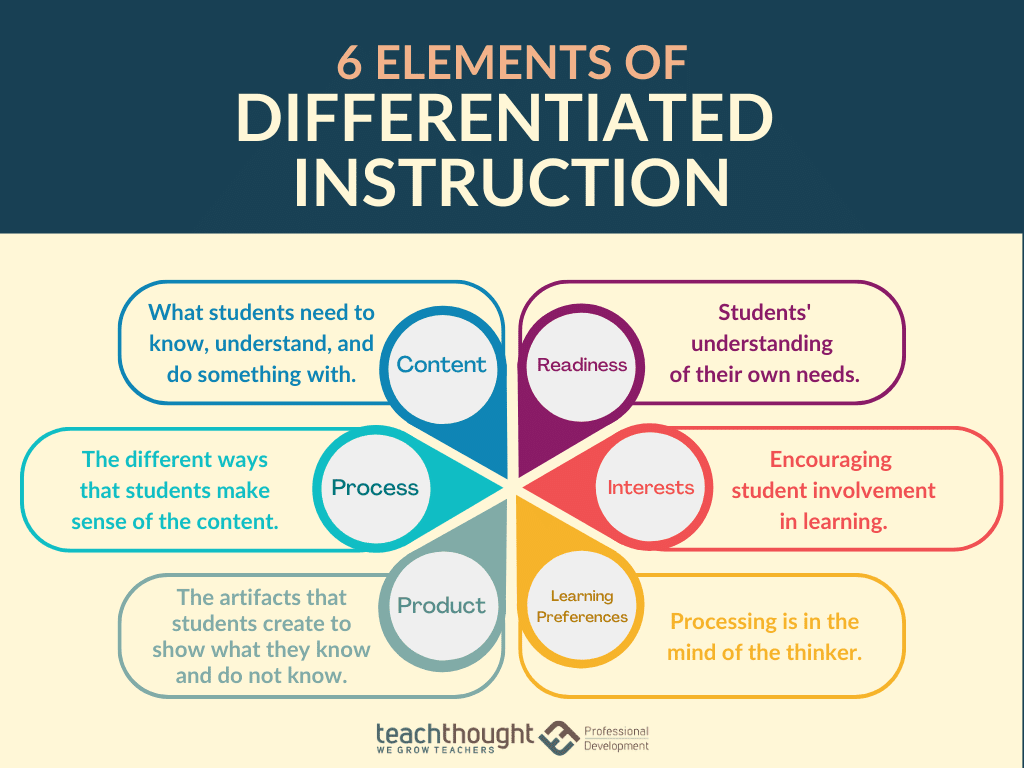5 Ways to Differentiate Instruction
by TeachThought Staff
Differentiation is an important aspect of education that aims to meet the diverse needs of students in the classroom.
It is the process of tailoring instruction to meet the individual learning needs and preferences of students. Differentiated instruction recognizes learners’ different readiness, interests, and learning preferences and helps teachers adjust their instruction accordingly. Here are five ways to differentiate instruction to better meet the needs of your students.
1. Pre-Assessment
Before beginning a new lesson or unit, it is important to assess students’ prior knowledge, skills, and abilities. Pre-assessments can provide valuable information about what students already know, what they need to learn, and how they learn best. Teachers can use this information to modify their instruction to meet individual student needs. For example, if some students already have a strong foundation in a particular topic, the teacher can provide them with more challenging activities or projects, while those who struggle can receive additional support and scaffolding.
2. Flexible Grouping
Flexible grouping is a strategy that allows teachers to group students based on their individual needs, rather than assigning them to fixed-ability groups. Teachers can use various grouping strategies, such as homogenous grouping, where students are grouped based on similar abilities, or heterogeneous grouping, where students with different abilities and backgrounds are grouped together. Grouping strategies can be changed as needed, based on the student’s progress and needs.
See also The Difference Between Differentiation And Personalized Learning
3. Varied Instructional Strategies
Differentiated instruction helps teachers to use a variety of instructional strategies to meet the diverse needs of their students. Teachers can use a combination of activities to accommodate different readiness, interests, and learning preferences. For example, some students may learn better through Tiered Instruction, Leveled Instruction, or Curriculum Compacting. Providing a variety of instructional strategies can help engage all learners in the classroom
4. Multiple Assessments
Assessment is an important aspect of differentiation because it allows teachers to evaluate students’ learning and determine their individual needs. Multiple assessments can provide a more accurate picture of student progress than a single test or assignment. Teachers can use formative assessments, such as exit tickets, quizzes, or observations, to evaluate student learning and adjust their instruction accordingly. Summative assessments, such as tests or projects, can be used to evaluate overall student achievement.
See also The Purpose Of Assessment
5. Student Choice
Giving students a choice in their learning can be a powerful motivator and help them take ownership of their learning. Teachers can provide choices in the types of activities or projects students complete, the topics they study, or the methods they use to demonstrate their learning. Providing choice can also help students to develop independence and self-direction.

Differentiated instruction is a vital aspect of teaching that can help meet the diverse needs of learners in the classroom. Teachers can differentiate by adapting instruction to better meet individual student needs, teachers can help all students achieve academic success.